Essential safety considerations for backyard pools before the fun begins
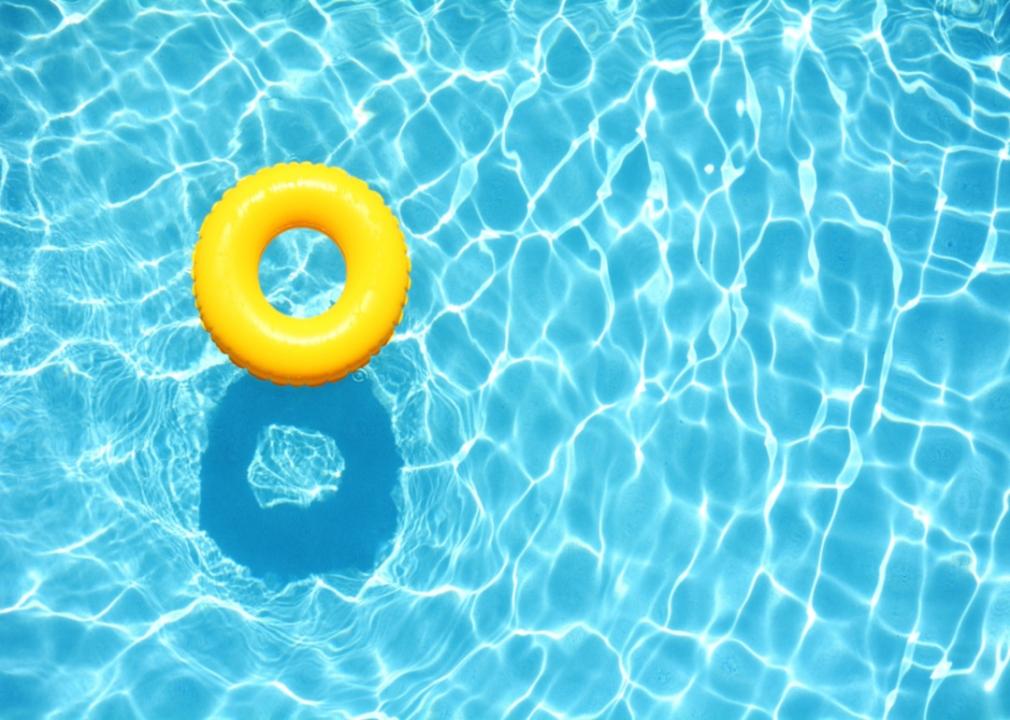
StacieStauffSmith Photos // Shutterstock
Essential safety considerations for backyard pools before the fun begins
A yellow pool float in a pool.
Hosting pool parties or lounging with neighbors in their backyard oases have become quintessential pastimes, especially in the summer. But before homeowners break out their swim gear, they should consider some weighty safety matters.
Swimply reviewed and compiled recommendations from the Consumer Product Safety Commission, among other authorities, to identify the top seven things would-be hosts can do to create safer pool environments for themselves and their guests.
After decades of decline, the number of drowning deaths in recent years has shown a worrisome uptick, according to the Centers for Disease Control and Prevention. More than 4,500 people in the United States died from drowning each year from 2020 to 2022—500 more deaths per year than in 2019.
For guests with babies and toddlers, pools can be especially perilous. Drowning is the #1 cause of death for children ages 1 to 4. Those drownings often occur during nonswim times when there is a lack of adult supervision, according to the U.S. National Water Safety Action Plan’s June 2023 report.
Experts point to swim lessons as a life-saving prevention measure that will enable children to be safe and confident in the water. One study found that children who participated in a water survival strategies program had a 96% less chance of drowning than kids who did not take a class, per USNWSAP’s report. Yet, there is a disparity in who attends these classes and learns to swim.
According to the CDC, nearly 2 in 5 (37%) Black adults reported not knowing how to swim, compared to 15% of all adults. Recent government grants and philanthropic efforts have focused on making basic swim classes available to children and adults at public pools and gyms.
Besides reminding guests to stay safe near the water, hosts can also consider these other safety measures to ensure their summer party is truly a splash of the good kind.
![]()
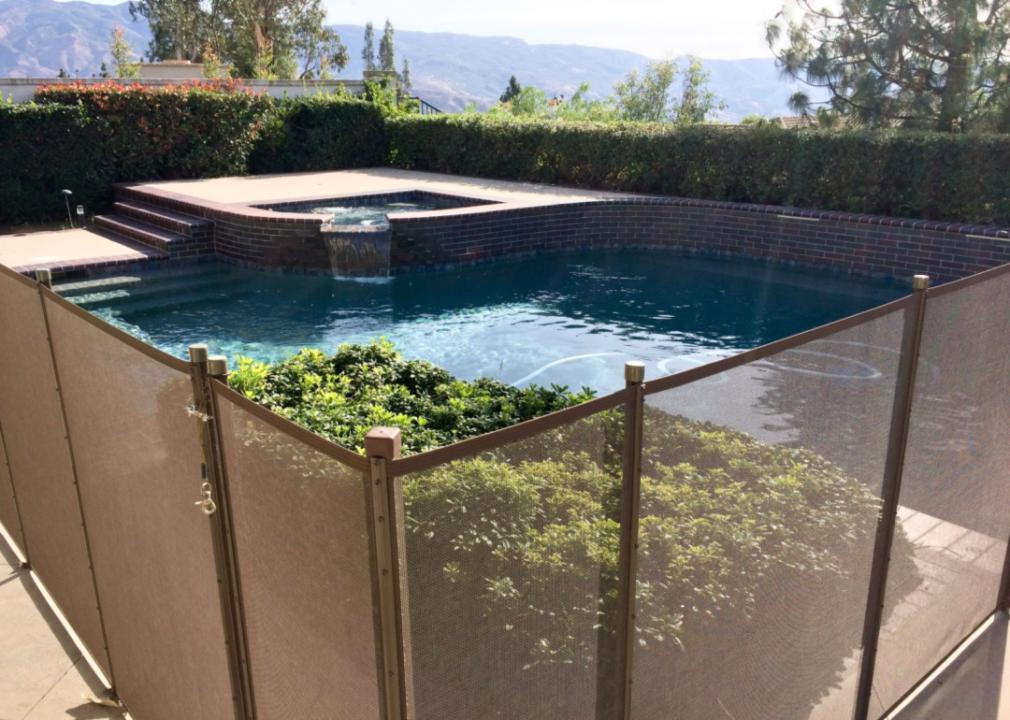
QuiteSimplyStock // Shutterstock
Install a fence or barrier
A pool with a safety fence.
The first, and arguably one of the most important safety measures hosts can implement, is installing a fence around their pool’s perimeter. The CPSC recommends fences surround all four sides of the pool and are at least 4 feet, but preferably 5 feet, tall. Not just any ol’ barrier will do—you need to make sure a young child can’t squeeze through vertical slats or gain a foothold and scramble over or under a brick or cement wall.
The commission provides some specific guidelines on how to install a proper barrier, but your state and local governments likely have some laws too. Check your town’s local zoning, engineering, or building department for up-to-date guidelines.
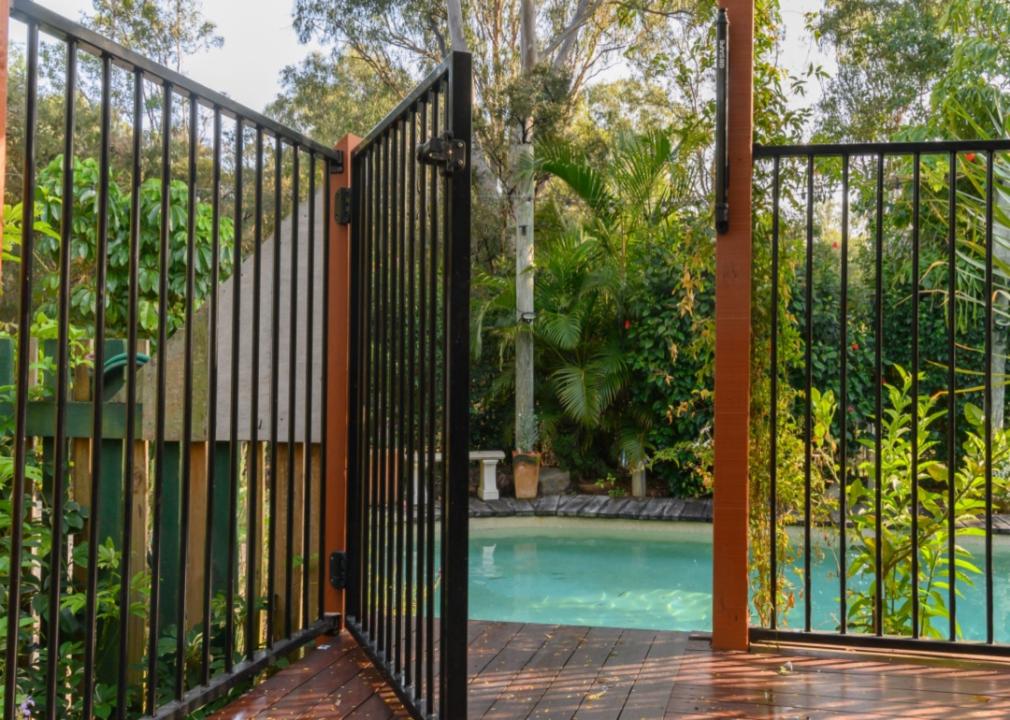
whitejellybeans // Shutterstock
Add locks and alarms
A fence around a pool with a gate open.
Local laws may also require a self-closing, self-latching gate and locks to be installed with the fence or barrier. The CPSC recommends placing the “release mechanism” no lower than 3 inches from the top of the gate—hosts wouldn’t want young children, especially those happily running around with other kids, to be able to reach up and unlatch it on their own.
If a backdoor allows guests to access a pool, hosts should also install an alarm that will sound when the door is opened. The alarm should be loud and distinct so nearby adults will be alerted immediately if a child opens it. Do not install doggy doors leading directly to the pool area—curious children will crawl through them. Some municipalities ban doggy doors altogether in homes with pools unless there is an “isolation fence” around the pool, according to the CPSC.
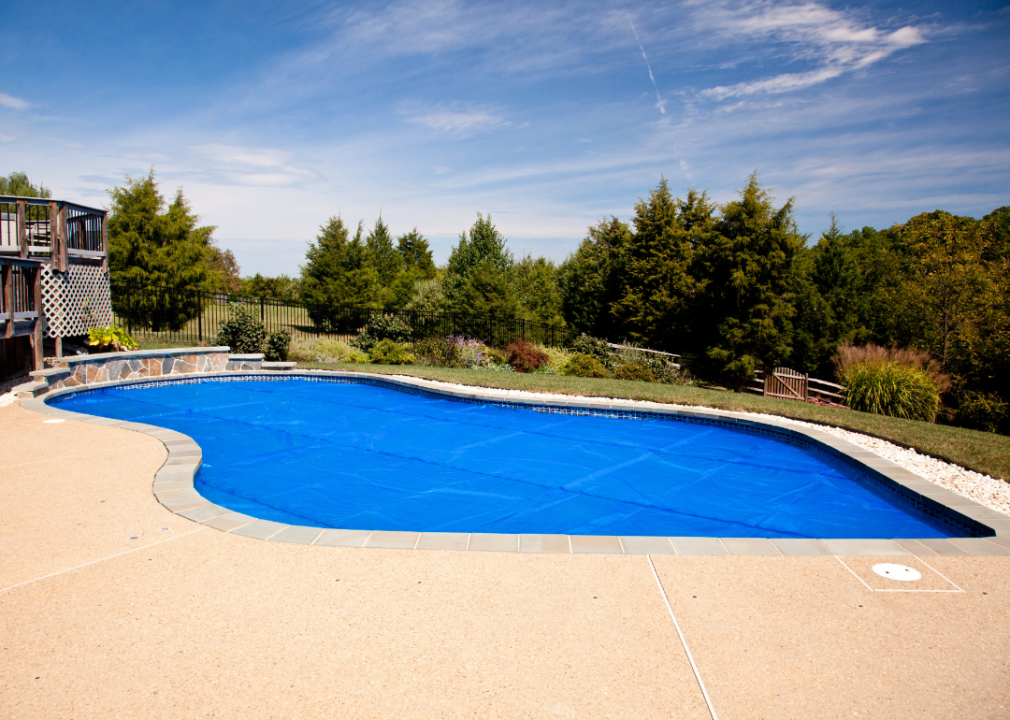
Canva
Cover it up
A pool with a cover.
Pool covers can also prevent or delay drowning, and hosts should consider them, especially for in-ground pools where it may be easier for children to fall in.
According to Goodall Pools and Spas, a “safety cover is made of heavy-duty mesh or vinyl material is placed over the entire pool. The material has a strength of approximately 4,000 pounds or the weight of a small SUV.” Goodall promotes anchoring the cover into the concrete surrounding the pool instead of holding it in place with weighted bags.
There are also covers designed specifically for drains or other features, which can help prevent swimmers’ hair or limbs from being accidentally trapped in the drains. Before the event, check to ensure drain covers and other similar anti-entrapment devices are in good working order.
In 2002, 7-year-old Virginia Graeme Baker became stuck in a powerful hot tub drain due to a “powerful suction force,” according to the CPSC. Two adults pulled her away from the drain, but Baker still died from drowning. A federal law named in her honor requires all public pools and spas to have anti-entrapment drain covers and other devices.
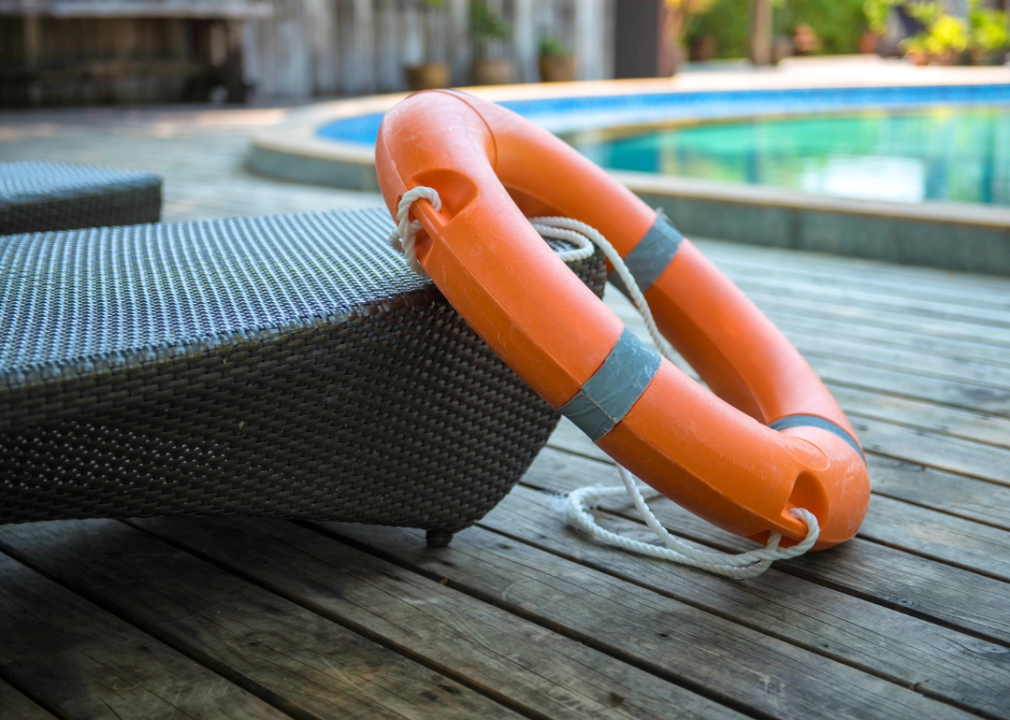
Canva
Keep life-saving devices handy
A life ring on a lounge chair next to a pool.
Pool safety is more than preventing unsupervised children and pets from getting into the water; it’s about being prepared for the worst, even when a multitude of adult guests are present to keep an eye on the pool. CPSC suggests that life rings, floats, or a reaching pole should be easily accessible to help fish a struggling swimmer out of the water.
Get certified or recertified in CPR and first aid, and ask other adults and teens in your household to be trained too. When enjoying the pool with others or alone, keep a fully charged phone nearby in case anyone needs to call for help.
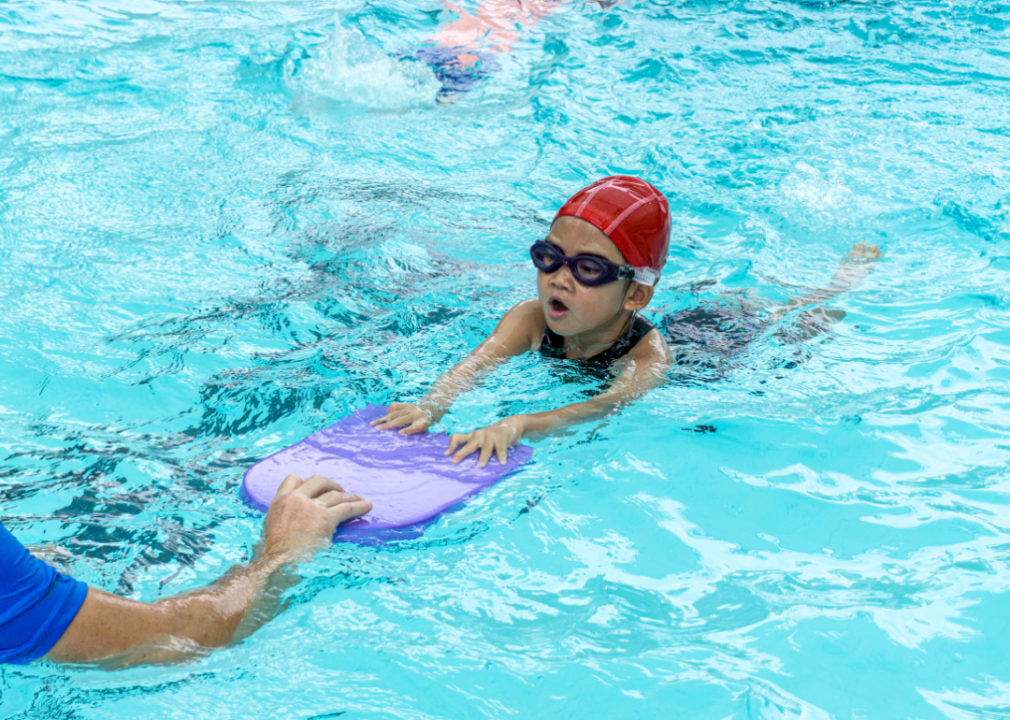
Canva
Learn to swim
A child learning to swim.
One of the more important measures hosts and guests can take is to learn how to swim and ensure that others in your life, especially children, take swim lessons.
Learning to swim at an early age not only helps prevent drowning but unlocks a fun means of exercising and cooling off. The American Red Cross, YMCAs, and local public pools often offer formal swim lessons for both adults and children. Through recent federal grants and private donations, several organizations offer free or reduced-cost lessons too.
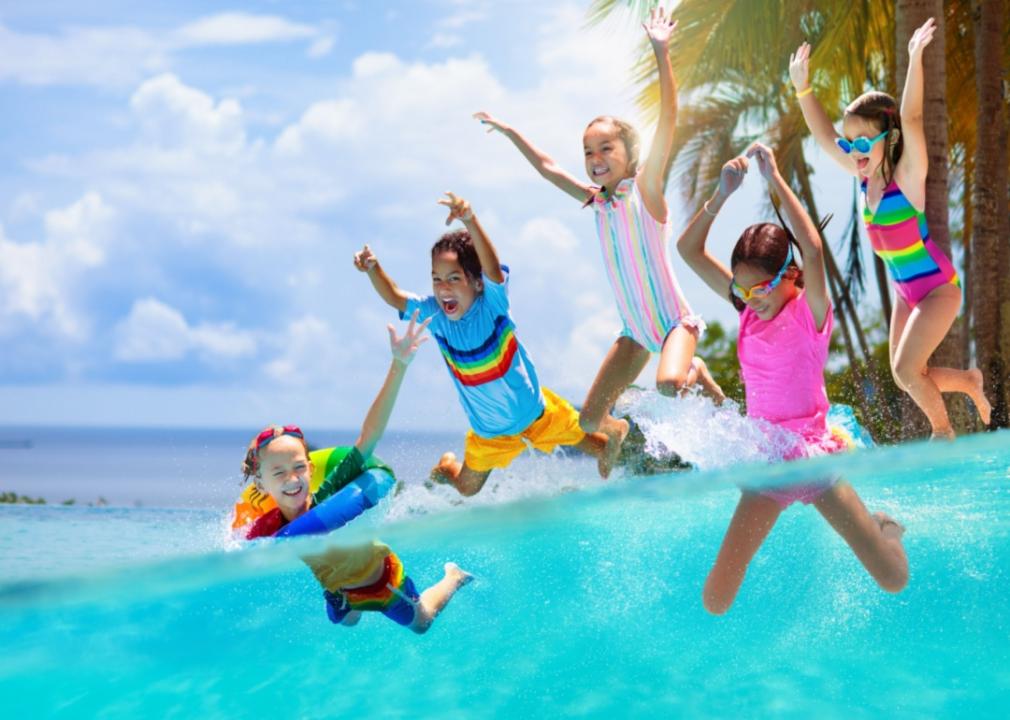
FamVeld // Shutterstock
Keep eyes sharp and colors bright
A group of kids in colorful swimwear jumping into a pool.
Hosts will probably be busy catching up with any number of guests, so a designated “water watcher” to supervise children is even more necessary, the New York State Office of Children and Family Services advises. That designated person must know how to swim and not be distracted by their smartphone or other guests.
This position can be passed from one adult to the next throughout the day, just be sure to verbally confirm that hosts (and willing guests) know it’s their turn. If budgets allow, hiring private lifeguards can give hosts and guests peace of mind without putting a damper on the party.
Consider asking guests to don their brightest, wildest swim outfits too. According to seasoned lifeguards, swimmers should wear bright, neon colors that will stand out even underwater, whether in a water park, lake, ocean, or pool.
ALIVE Solutions, which specializes in water safety, tested a wide range of swimsuit colors in both pool and open water and found that neon yellow, neon green, and neon orange were the most visible.
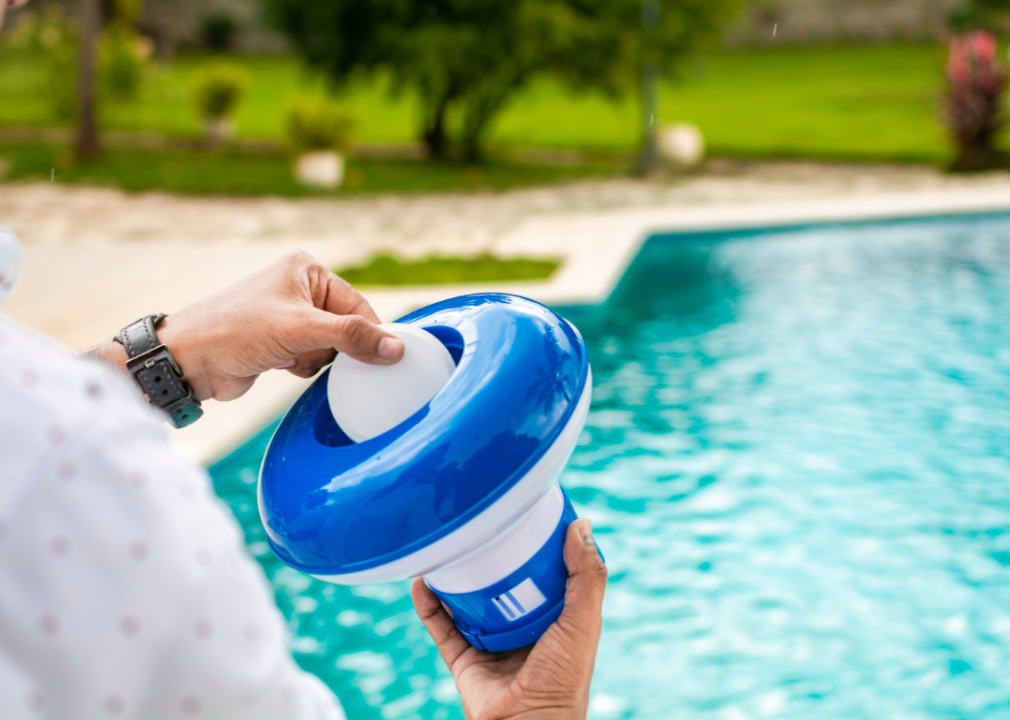
Canva
Store chemicals correctly
A person putting chemicals into a pool filter.
Finally, as hosts clear their everyday clutter from their backyards, they should also check to ensure chemicals in backyard pools are used correctly and stored safely. The CDC advises establishing a dedicated storage area inaccessible to children or animals. Follow the manufacturer’s recommendations, keep the chemicals in their original, labeled bottle, and keep the storage area below 95 F. HTH Pools advises to “look for a cool, dry, secure, and well-ventilated area.” Learn how to handle chemicals safely and wear protective equipment if necessary.
To learn more about pool safety, check out the resources at PoolSafely.gov.
Story editing by Carren Jao. Copy editing by Robert Wickwire. Photo selection by Lacy Kerrick.
This story originally appeared on Swimply and was produced and
distributed in partnership with Stacker Studio.